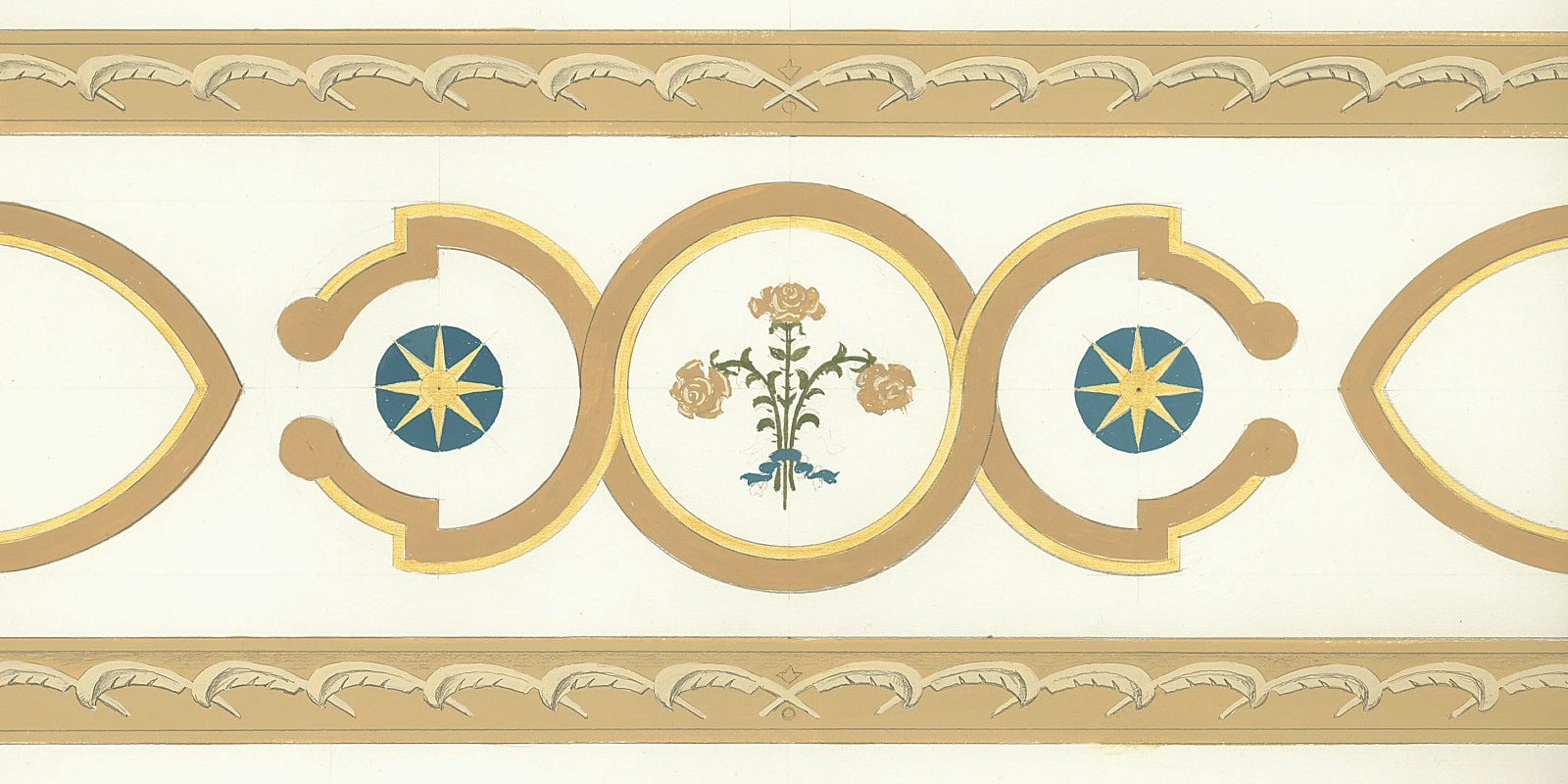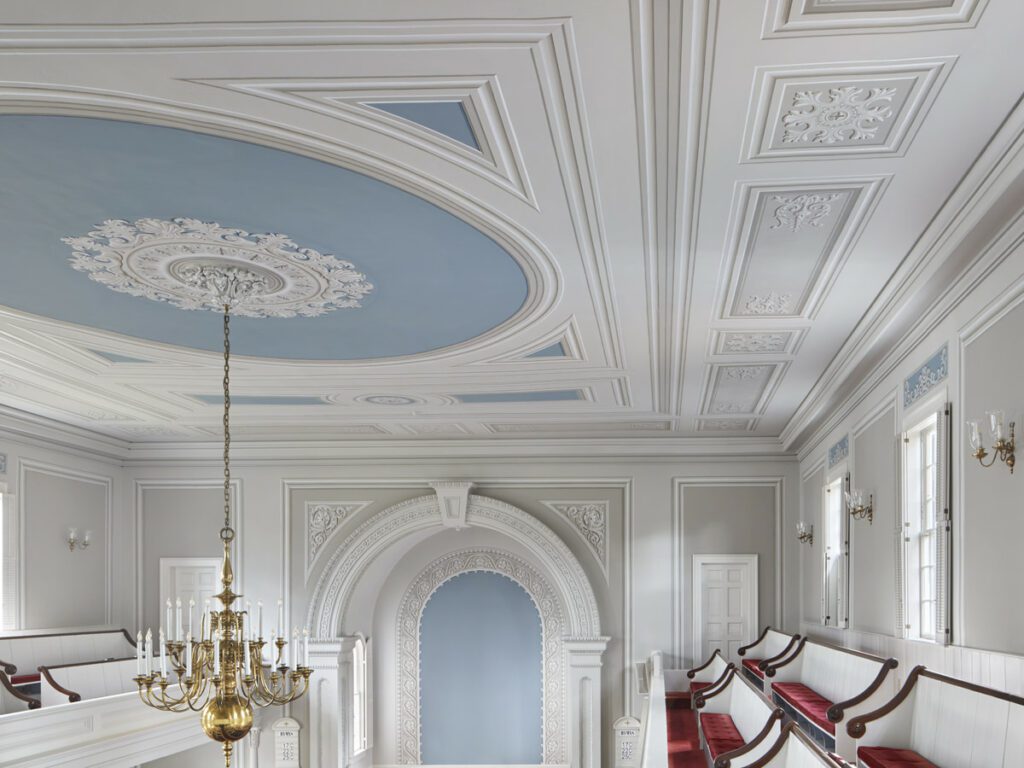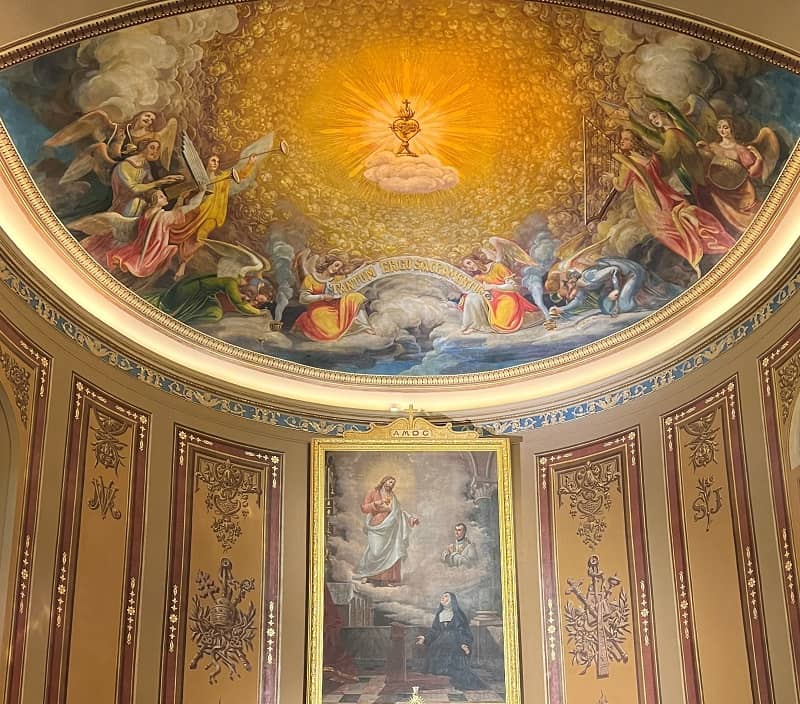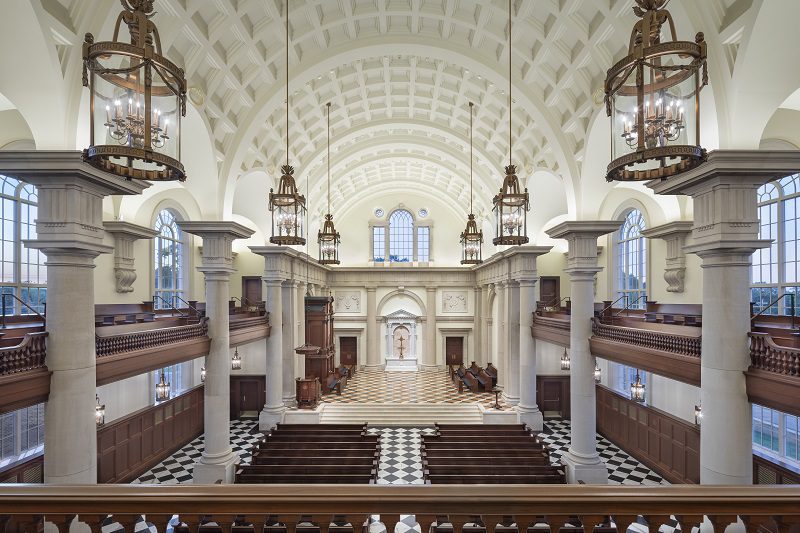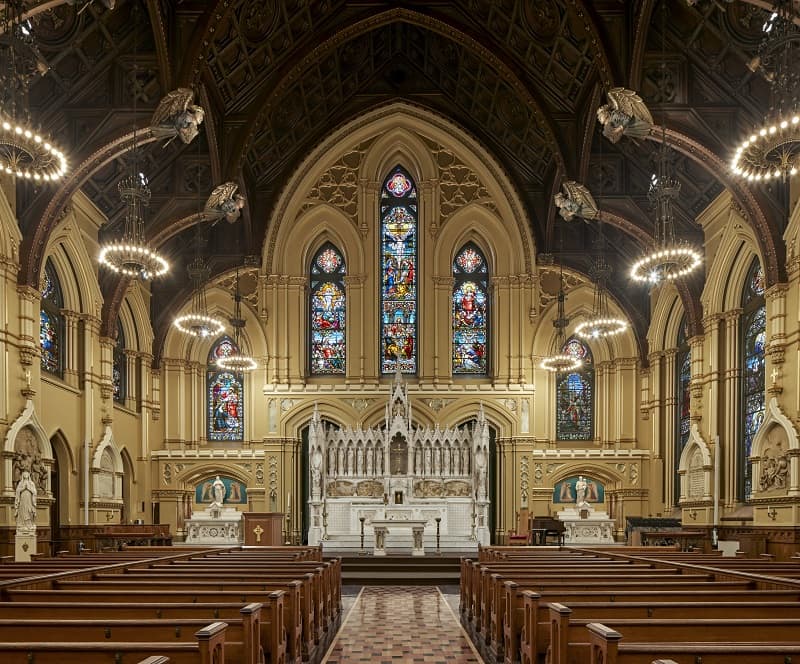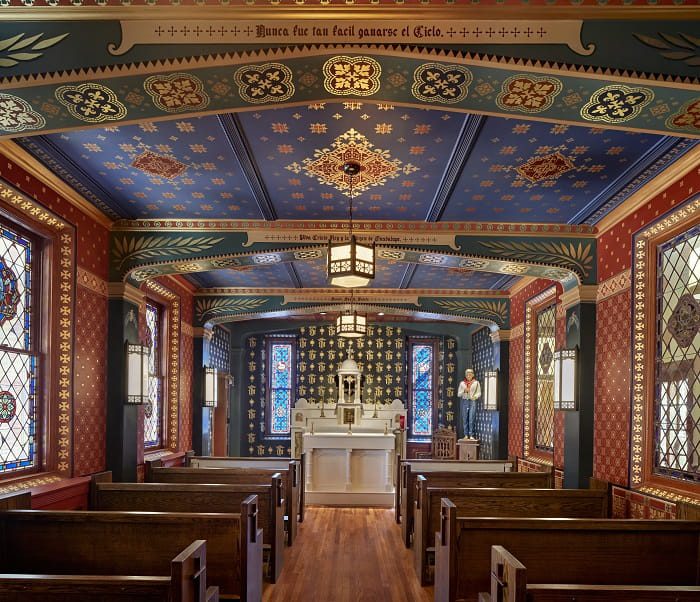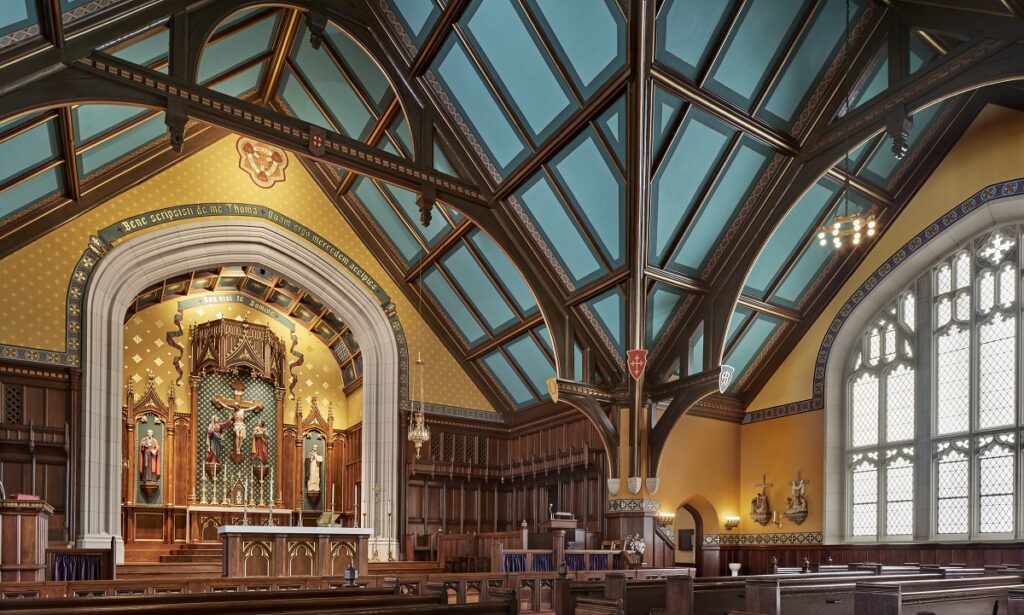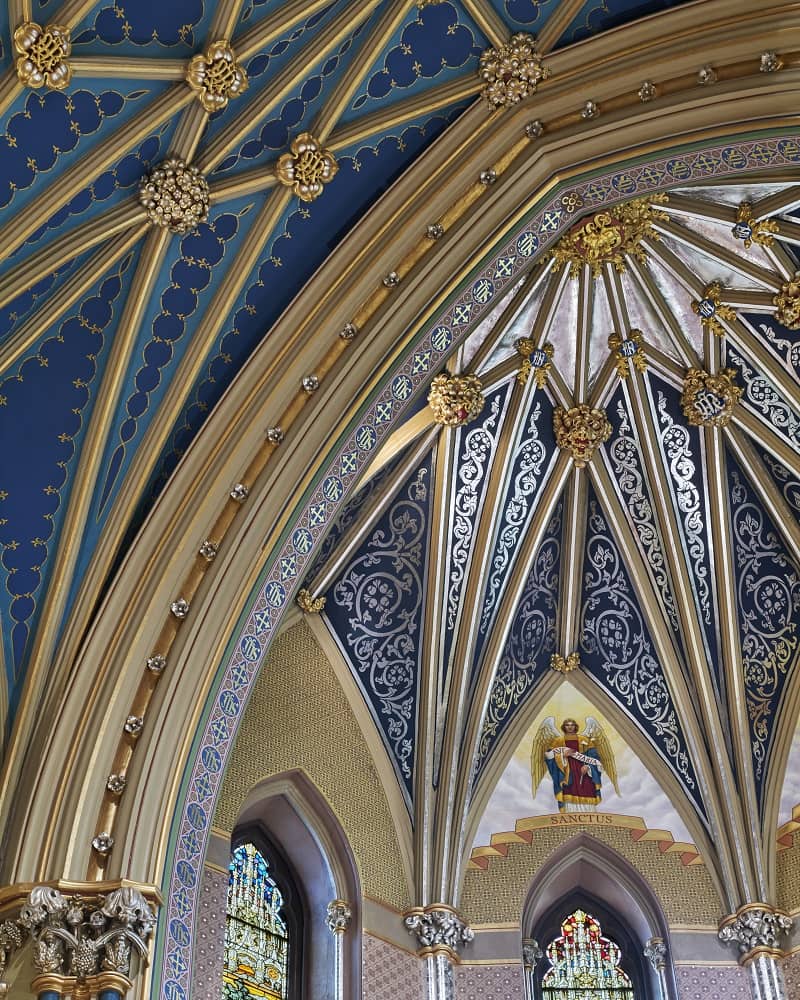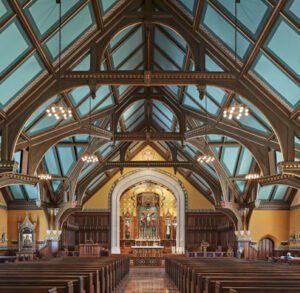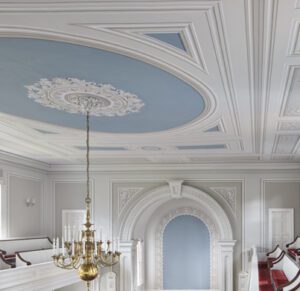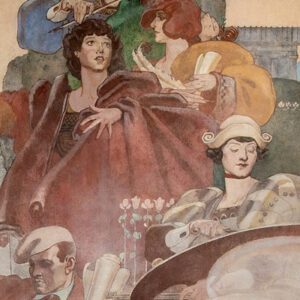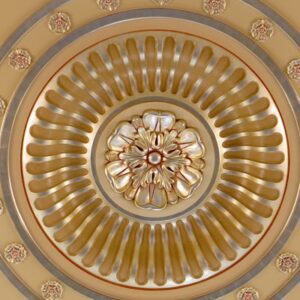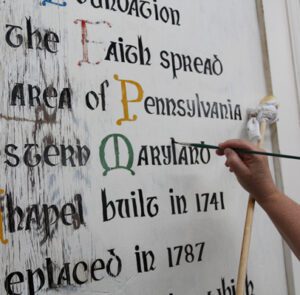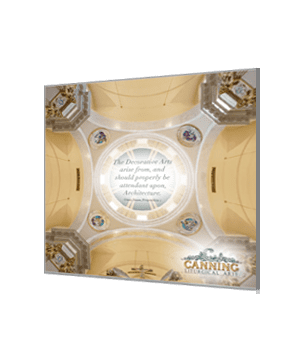The decoration of any building, whether civic, residential, liturgical, or for entertainment, should arise from and be dependent upon the architecture in order to direct the viewer to the structure’s intended purpose. The sturdy, noble structure of a courtroom facilitates an impression of order and justice. Theaters are ornamented intricately in order to inspire awe and wonder and are built symmetrically, directing the viewer to the stage. In the same way, all churches -whether cathedrals, basilicas, shrines or chapels- should be built and decorated in such a way as to raise the hearts and minds of the congregation to adore God, the purpose of every church.
Color Scheme
A very important contributor to the decoration of a church is its color scheme. In choosing this color scheme, it is important to understand the architectural style of the church, but most importantly, to design the color scheme in light of the particular church devotion. Most churches are built in honor of a particular saint or a certain title of Christ or the Blessed Mother. To remind the congregation of this patronage and to honor the chosen saint, the stencils, color schemes, and décor of the sanctuary should reflect the life of that patron saint.
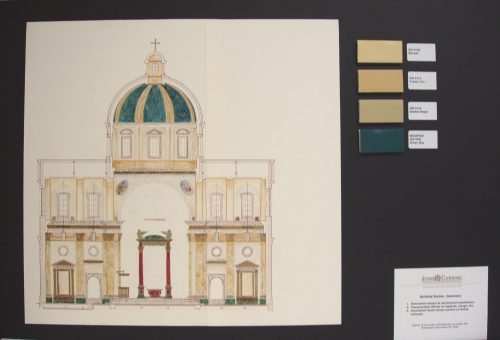
Why do Churches Have Specific Patronages?
The saints are acknowledged as holy men and women who lived for their Lord and therefore serve as inspiration for the faithful. Just as the lives of different saints all point to the glory of God, churches, although built and painted differently, serve the same purpose. Our Lady of Guadalupe supports and encourages the service of dedicating churches to holy men and women. In her words to St. Juan Diego in December of 1531, she instructed him to build a church in her name: “That my will may have its effect, thou must go to the city of Mexico and to the palace of the bishop who resides there, to tell him that I have sent thee and that I wish a temple to be raised to me in this place.” The church was completed in 1709 and was granted the title of Basilica of Our Lady of Guadalupe in 1904 by Pope Pius X.
Canning was intimately involved in the design and beautification of a Church in honor of this Marian title, the Shrine of Our Lady of Guadalupe in La Crosse, WI. The color scheme was designed to match Our Lady’s tilma and included a turquoise sky gilded with constellations to match the night sky during the time in which Juan Diego saw the vision.
Process
The process of choosing the color scheme of a church interior is highly dependent on understanding the church’s specific devotion and, for this reason, it is important to know the symbolism tied into each saint, Marian title, or any other Christian title employed.
Patronage Examples
Saints
Saints are traditionally depicted in certain garb and with certain symbols which reflect his or her life and death. St. Peter is often shown holding the keys to the kingdom of heaven entrusted to him by Christ. The famous St. Peter’s Basilica in Vatican City is rich in gold to symbolize these eminent keys. In paintings, a cock is often seen crowing in the background to reflect Peter’s denial or an inverted cross to symbolize his death. St. Catherine of Sienna is depicted in her white and black Dominican habit holding a crucifix and crowed with thorns to symbolize the stigmata she received during her life. She is also often shown holding white lilies to represent her purity. St. Catherine of Siena Church in Trumbull, CT, a project of Canning’s, is painted in a muted color scheme to represent her simple life and includes her statue to the right of the altar. Thus, all saints have a distinct and notable way of being depicted in order to inspire the minds of the faithful by their holy lives and the color scheme of any church should be in accordance with this specific devotion.
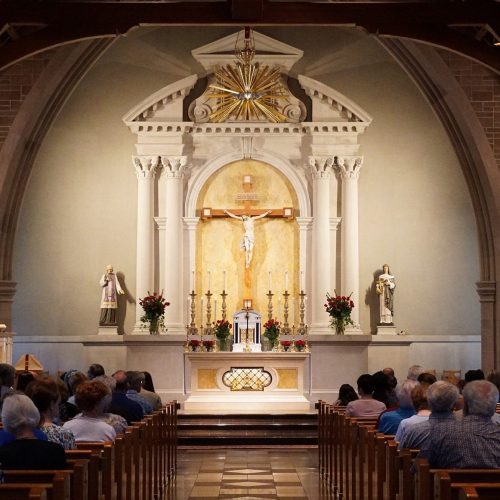
Mary
A blue ceiling is a common symbol of the Blessed Mother’s mantle which is seen in many Marian churches. John Canning & Co. restored the interior of both St. Mary’s Church in Norwalk, CT as well as St. Mary’s Church in New Haven, CT which prove beautiful examples of this tradition. Other color schemes are used to represent Our lady as well. Our Lady Help of Christians in Newton, MA is decorated with light, feminine colors and detail to portray our Lady’s tender care. The Basilica of the Immaculate Conception in Waterbury, CT elevates the hearts and minds of the congregation to ponder the glory of heaven with the mosaic on the dome interior. The Coronation of Mary is depicted there in bright, golden colors surrounded by trumpeting cherubim.
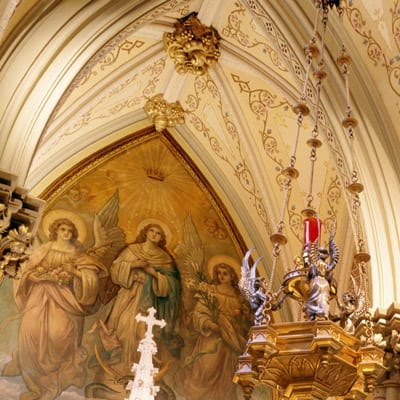
Christ
There are also certain churches dedicated to different titles of Jesus Christ such as Corpus Christi, Agnus Dei, or Christ the King. In a similar manner, understanding the symbolism for each title is vital for the painting and decorating of a church interior. For example, the Agnus Dei, or Lamb of God, is a title of Christ signifying the fact that he is the perfect sacrifice in redemption of the imperfect sacrifices of the Old Testament. The lamb is depicted with a cross and scroll symbolizing the death and resurrection of Christ.
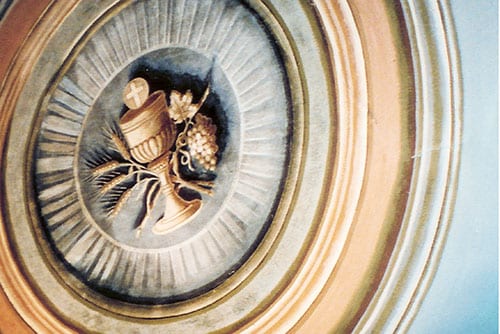
In accordance with the words of Our Lady of Guadalupe, the ecclesiastical designers, in the architecture and decoration of a church, should take into consideration the colors and symbols of the patron in whose honor they are designing.

